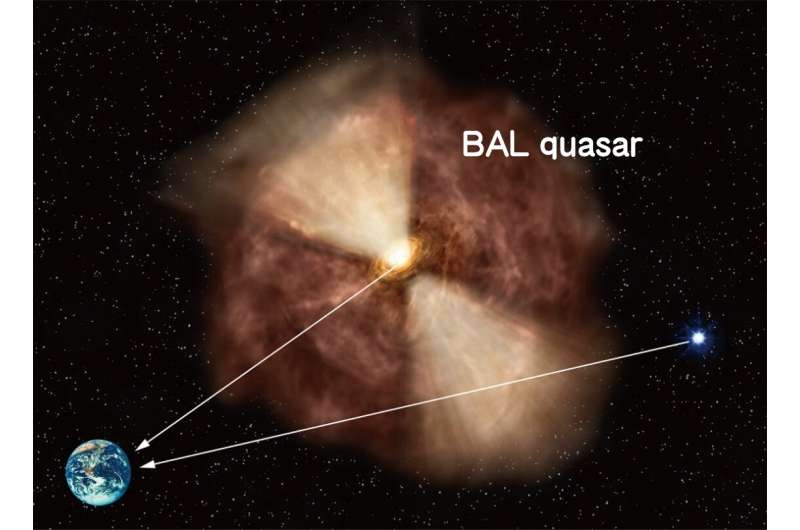Scientists have studied a rare variety of active galactic nuclei called BAL quasars. They concluded that the ultraviolet radiation of these objects causes anisotropy of ionization of interstellar gas.

Mysterious anisotropy
Quasars are supermassive black holes in the centers of some galaxies. They intensively absorb matter and emit electromagnetic waves in many areas of the spectrum, including ultraviolet. Waves of this range intensively ionize the gas scattered in the interstellar medium, tearing electrons from atoms.
Previous studies have shown a strange thing. The degree of ionization of interstellar gas near quasars depends on the direction in which the observer looks at them. And this is very strange, since the ultraviolet radiation of quasars is isotropic, that is, the same regardless of the direction of vision.
The phenomenon of heterogeneity of material properties depending on the direction in which you study it is called anisotropy. It is quite common in nature, but there must always be some reason for it.
Donuts in the center of BAL quasars
Scientists from Shinshu University, in Japan, decided to understand what is the reason for this phenomenon. For this purpose, they investigated a rare variety of active galactic nuclei called BAL quasars. They differ from the others in that they can measure how evenly the ultraviolet radiation is in different directions.

Studies have shown that they do have anisotropy in this part of the spectrum. Scientists have linked it to the presence of a dense cloud of dust around the black hole in the form of a donut. They proved that the anisotropy of the ionization of interstellar gas around the quasar exactly coincides with the orientation of this giant torus.
Giant donut-like structures should exist around all quasars. For most of them, scientists probably just can’t determine orientation. However, the established patterns must be true for them as well.
According to phys.org
Follow us on Twitter to get the most interesting space news in time
https://twitter.com/ust_magazine
